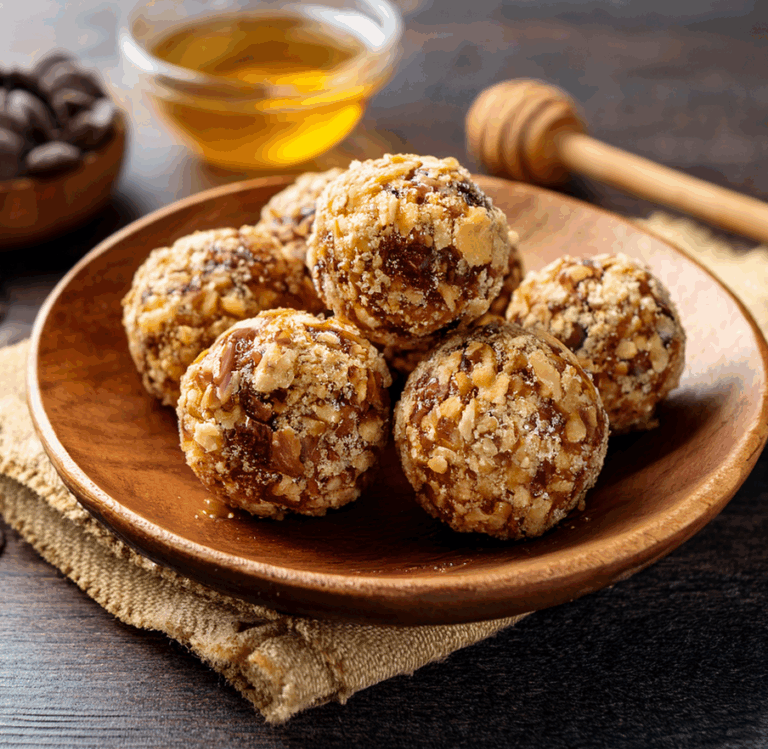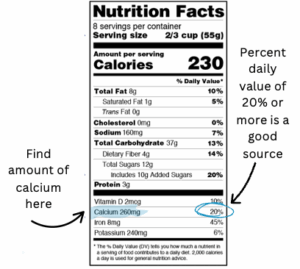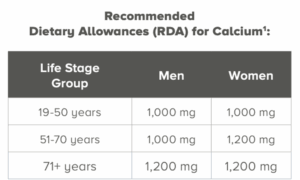Calcium: Why It Matters More as We Age

Calcium: Why We Need It and Where to Get It
Calcium is the most abundant mineral in the human body.
It plays an important role throughout life in keeping our teeth and bones strong. About 99% of the calcium in our body is stored in our bones, with the rest in our blood, muscles, and other tissues. We get calcium from the food we eat, or from calcium that is already stored in our bones. Food is the best source, but calcium can also come from dietary supplements. Vitamin D, which helps the body absorb calcium, is made in our skin through sunlight and can also be found in certain foods.
Calcium helps keep bones strong and supports the hardness of our teeth. It allows muscles to move, helps nerves send messages between the brain and the rest of the body, moves blood through our blood vessels, and helps release hormones and enzymes that keep the body working.
Why Older Adults Need More
As we age, we naturally lose bone mass and our bodies absorb less calcium. Some medications can make this worse. Many older adults spend less time outdoors, which can lead to lower vitamin D levels and make it harder to absorb calcium. Diet changes, such as drinking less milk, can also reduce calcium intake. Not getting enough calcium can cause low calcium levels in the blood, weak bones, more frequent fractures, and osteoporosis. On the other hand, getting too much calcium can cause a condition called hypercalcemia, which can lead to kidney damage and kidney stones.
Understanding Calcium on Food Labels
Calcium is listed on all food labels. First, look at the serving size. Then check the amount of calcium per serving, which is shown in milligrams. You can also check the percent Daily Value. If it is 20% or higher, it is considered a good source of calcium.

Osteoporosis
Osteoporosis is a disease that makes bones weak and brittle, increasing the risk of fractures. Women are at higher risk, as are people who are older, have a family history of the disease, certain medical conditions, a history of fractures, or take certain medications. The good news is that you can help lower your risk by getting enough calcium and vitamin D, staying active, not smoking or vaping, and limiting alcohol.
Calcium Sources
Calcium is found in many foods. Dairy products such as milk, cheese, yogurt, kefir, and cottage cheese are excellent sources. Fortified plant milks and juices also provide calcium. Other good sources include almonds, soy, edamame, beans, canned sardines or salmon with bones, leafy greens, peas, and broccoli.
What About Lactose Intolerance?
Lactose intolerance happens when the body does not have enough lactase enzyme to digest the natural sugar in milk and dairy products. This can cause gas, bloating, cramping, and diarrhea. Many people can still enjoy small amounts of dairy, especially when eaten with other foods. Cheese has very little lactose, and yogurt is often well-tolerated because the lactose is broken down by bacteria. Lactase enzyme tablets can also help. There are many lactose-free products and fortified alternatives available.
Tips for Getting More Calcium Every Day
When shopping, read labels to check calcium content. Choose foods naturally high in calcium such as leafy greens, dairy products, almonds, and beans. Try starting the day with yogurt, cereal with milk or fortified plant milk, or eggs with spinach and cheese. Cheese or almonds make good snacks, and leafy greens can be added to meals or salads. Beans and edamame are easy to include in soups, salads, or side dishes.
No-Bake Tahini Honey Energy Balls

Try these tasty no-bake energy balls that get their calcium from tahini, chia seeds, and walnuts.
From walderwellness.com
Makes about 12 balls
Wet Ingredients:
- 1 cup tahini
- 1 tsp vanilla extract
- ¼ cup honey
Dry Ingredients:
- 1 ¼ cups rolled oats
- ¼ cup mini chocolate chips (unsweetened or semi-sweet)
- ¼ cup chopped walnuts
- 2 Tbsp chia seeds
- ⅛ tsp salt
Instructions:
- Line a baking sheet with parchment paper.
- Mix wet ingredients in a large bowl.
- Mix dry ingredients in another bowl.
- Combine wet and dry ingredients.
- Roll about 2 Tbsp of mixture into balls and place on baking sheet.
- Freeze for 2 hours, then let thaw slightly before eating.
